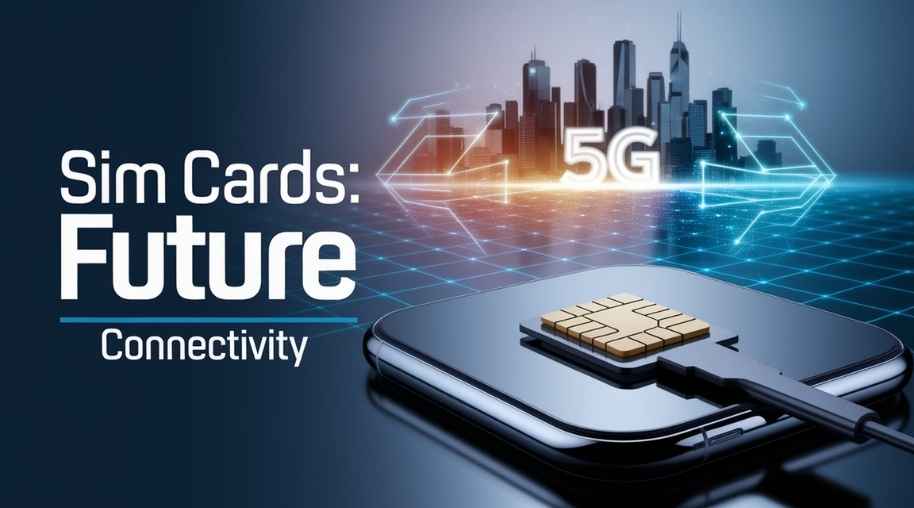SIM Full Form-Subscriber Identity Module
by Shashi Gaherwar
0 2233
Understanding Subscriber Identity Module (SIM): Functions, Types, and Security
The Subscriber Identity Module (SIM) is a crucial component in mobile communication. It serves as an identification tool that allows users to connect to a mobile network securely. SIM cards have evolved over the years, adapting to new technologies, from traditional plastic SIMs to embedded SIMs (eSIM). This article explores SIM card functions, types, and security features, shedding light on their role in mobile networks and the telecom industry.

What is a SIM Card?
A SIM card is a small chip that stores subscriber information required to authenticate a user on a mobile network. This chip holds essential data, including:
- International Mobile Subscriber Identity (IMSI): A unique number that identifies a subscriber in a mobile network.
- Authentication Key (Ki): A security code used for encryption and authentication.
- Local Network Information: Used for network access and roaming services.
- Phonebook and SMS Storage: Some SIM cards store contact numbers and text messages.
Without a SIM card, a mobile phone cannot access a network for calls, messages, or data services.
Types of SIM Cards
Over the years, SIM cards have evolved in size and functionality. Here are the major types:
- Full-Size SIM (1FF): Introduced in the early 1990s, about the size of a credit card, now obsolete.
- Mini-SIM (2FF): Standard size for many years (25mm x 15mm), used in feature phones and early smartphones.
- Micro-SIM (3FF): Smaller than Mini-SIM (15mm x 12mm), introduced with smartphones like the iPhone 4.
- Nano-SIM (4FF): The smallest removable SIM card (12.3mm x 8.8mm), used in modern smartphones to save space.
- Embedded SIM (eSIM): A non-removable chip embedded into a device, reprogrammable remotely, found in smartwatches, tablets, and modern smartphones.
How SIM Cards Work
SIM cards work by authenticating users to a mobile network. When a phone is powered on, the SIM:
- Authenticates with the Network: The IMSI and Ki authenticate the user with the carrier.
- Connects to the Network: Once authentication is successful, the phone gains access to calls, texts, and data.
- Encrypts Communication: SIM cards use encryption protocols to secure data transmissions.
- Stores User Data: Some SIMs hold contact numbers, messages, and application data.
SIM Card Security and Protection
Security is a major concern for SIM cards. Various measures are in place to protect user data and prevent unauthorized access:
- PIN & PUK Codes: PIN (Personal Identification Number) prevents unauthorized access; PUK (Personal Unblocking Key) unlocks a SIM if the PIN is entered incorrectly too many times.
- SIM Cloning Protection: Advanced encryption techniques prevent hackers from cloning a SIM card; networks detect duplicate IMSIs.
- Remote SIM Lock and Deactivation: Users can request SIM deactivation if a phone is lost or stolen; some devices allow remote wiping of SIM-stored data.
- eSIM Security Enhancements: eSIMs are more secure as they cannot be physically removed; remote provisioning ensures only authorized users can change network profiles.
The Future of SIM Technology
With advancements in mobile communication, SIM technology is evolving:
- eSIM Adoption: Major smartphone manufacturers are integrating eSIMs for flexibility, allowing users to switch carriers without changing a physical SIM.
- iSIM (Integrated SIM): A next-generation technology integrating SIM functions into the device’s processor, offering better security, lower power consumption, and enhanced connectivity.
- 5G and SIM Evolution: 5G-compatible SIMs offer improved speed and reliability with enhanced encryption methods to protect user data on high-speed networks.
The Subscriber Identity Module (SIM) is an essential part of mobile communication, enabling secure network access. With advancements like eSIM and iSIM, the future of SIM technology promises greater security, convenience, and flexibility. Understanding how SIM cards function, their security features, and their evolution can help users make informed choices about their mobile connectivity.
As the telecom industry continues to innovate, SIM cards will remain at the forefront of secure and efficient mobile communication.
Further Learning Resources
If you’re passionate about building a successful blogging website, check out this helpful guide at Coding Tag – How to Start a Successful Blog. It offers practical steps and expert tips to kickstart your blogging journey!
For dedicated UPSC exam preparation, we highly recommend visiting www.iasmania.com. It offers well-structured resources, current affairs, and subject-wise notes tailored specifically for aspirants. Start your journey today!

Share:








Comments
Waiting for your comments